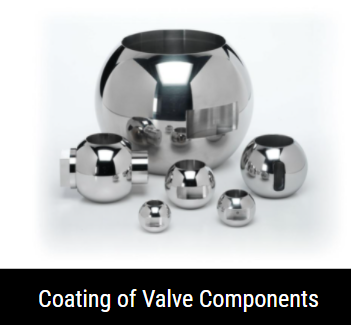Controlling corrosion

How can engineers overcome the unique set of challenges posed by various forms of corrosion?
Engineers and designers are increasingly challenged with the need to provide components and equipment operating in punishing conditions to last longer. These components cover a wide range of applications found in oil and gas, aerospace, flow control and renewables. Metals and alloys can be exposed to high corrosion, erosion and fatigue conditions and need to be carefully considered. According to the World Corrosion Organisation, the annual cost of corrosion is $2.2 trillion, equivalent to over 3% of the global GDP. This staggering figure is a global challenge affecting many industries, not only from a monetary perspective, but also in asset and infrastructure protection and, most importantly, life safety.
All forms of corrosion bring a unique set of challenges. In mild environments, metals may suffer from general corrosion (uniform surface attack) and still last for decades. While in severe service conditions, like sour oil and gas containing hydrogen sulphide (H2S), the lifespan of metal components in valves, pumps and seals can be greatly reduced due to hydrogen sulphide corrosion (HSC) and other hydrogen-induced failures. MR0175 is a federally mandated standard in the United States and is globally recognised as ISO 15156. The standard addresses the requirements and recommendations for selection and qualification of materials for H2S service in oil and gas production. Components exposed to salts, acids and carbon dioxide (CO2) can also result in aggressive corrosive attack, including metal loss and pitting. Additional factors like bacteria, temperature, humidity and so on can also influence the severity and rate of corrosion.
SELECTING COATINGS
Many factors support the addition of a properly selected coating for added corrosion resistance. Coatings act as the first line of defence in contact with the corrosive media and with low porosity can effectively block corrosive media penetration to the substrate. Multiple types of corrosion can attack metal components simultaneously which may not be initially anticipated, making coatings a sensible added solution. Coatings are often applied when erosion, abrasion and other wear factors are anticipated in order to extend the working life of components in demanding applications.
Advancements in materials, technologies and equipment have allowed for a wide range of available coating options. Some conventional solutions like hard chrome plating (HCP) are now facing a global phase-out (April 2024 in the EU and 2039 in the US set by California) due to health and environmental risks. Common existing alternatives to HCP include high velocity oxygen fuel (HVOF) and physical vapour deposition (PVD) technologies. Although successful in some applications, each has its limitations.
HVOF coatings can be thick and durable, but internal surfaces or complex shapes are not permissible. They are rough and porous and often require post-coat grinding. Cobalt, often used as the binder, can wear and degrade faster which compromises the integrity, surface finish and life of the HVOF coating. HVOF coatings typically have at least 1-2vol% porosity, which can open a path for corrosive media to attach the substrate. The porosity is often sealed using epoxies or other organic sealants which restrict operating temperatures below 200°C. PVD coatings are typically hard and thin (<5µm) but are considered brittle with reduced load-bearing capacity. Various wet electroplating and electroless coatings are more suitable for internal surfaces and complex geometries, but have lower hardness and wear resistance than HCP. The coating technology which combines all beneficial attributes into one solution is chemical vapour deposition (CVD).
CVD COATING TECHNOLOGY
Hardide’s CVD coating uses reaction gases in a coating chamber to create a very dense tungsten/tungsten carbide layer with desired application thicknesses from 5µm-100µm. These coatings are binder-less, porosity-free and exhibit unique ductile properties with hardness ranging from 400Hv (41HRc) to 1,800Hv (82HRc). As applied, they typically have a surface finish of ~0.5 - 0.6µm Ra, which can be polished to 0.2-0.3µm Ra without the need for grinding. This technology allows for the coating of complex geometries including ID’s of cylinders, odd shapes and porous materials. One example is a downhole mesh sand screen used by Chevron which boasts over a 10 times corrosion resistance improvement using Hardide CVD. These unique properties have helped solve many severe service challenges in oil and gas downhole tools and pumps and in aerospace wing, door and landing gear components in several new Airbus commercial aircraft. In flow control valve components, Hardide CVD can withstand operating temperatures up to 400°C or cryogenic LNG valve stem applications down to -196°C to mitigate fugitive emissions.
With respect to corrosion resistance, the virtually pore-free Hardide CVD coating matrix is highly resistant to chemicals, acids, as well as H2S and CO2 related service conditions. This offers customers an added superior corrosion barrier, in addition to exceptional wear resistance characteristics.
1.The news above mentioned with detailed source are from internet.We are trying our best to assure they are accurate ,timely and safe so as to let bearing users and sellers read more related info.However, it doesn't mean we agree with any point of view referred in above contents and we are not responsible for the authenticity. If you want to publish the news,please note the source and you will be legally responsible for the news published.
2.All news edited and translated by us are specially noted the source"CBCC".
3.For investors,please be cautious for all news.We don't bear any damage brought by late and inaccurate news.
4.If the news we published involves copyright of yours,just let us know.
BRIEF INTRODUCTION
Cnbearing is the No.1 bearing inquiry system and information service in China, dedicated to helping all bearing users and sellers throughout the world.
Cnbearing is supported by China National Bearing Industry Association, whose operation online is charged by China Bearing Unisun Tech. Co., Ltd.
China Bearing Unisun Tech. Co., Ltd owns all the rights. Since 2000, over 3,000 companies have been registered and enjoyed the company' s complete skillful service, which ranking many aspects in bearing industry at home and abroad with the most authority practical devices in China.



